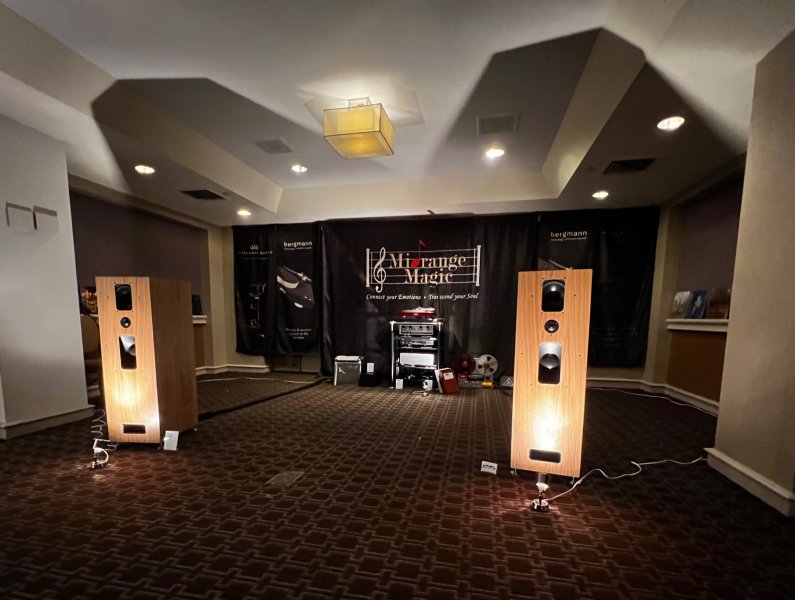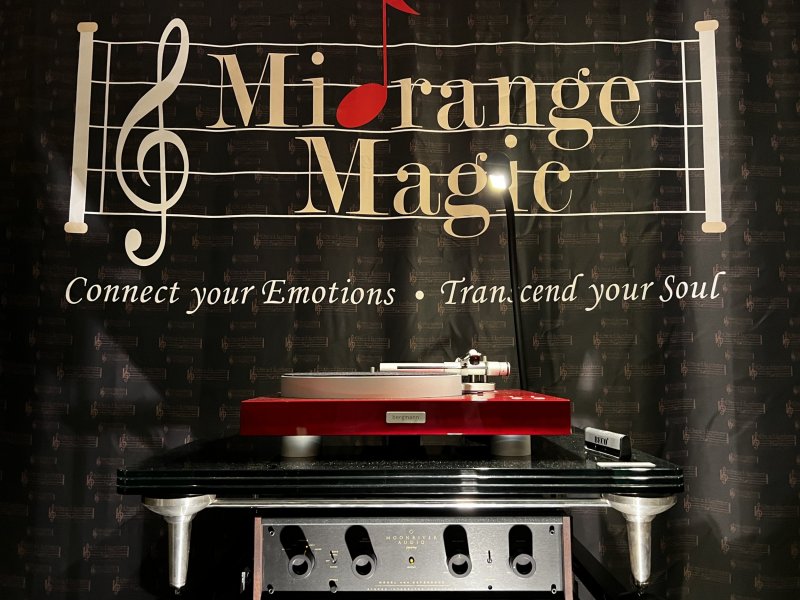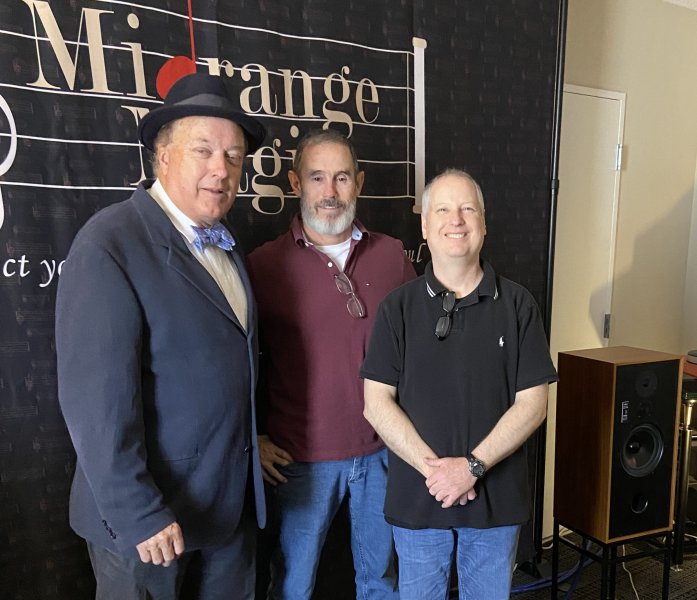An old frontier, renewed; where technology is at the service of music and allows the performers to communicate directly with the listener’s heart.
The perfect synergy makes the equipment disappear and nothing is left but the music’s purity and clarity. It has to be experienced and enjoyed to be appreciated.
The soul of the music is in the midrange, this is where most of the emotion, the passion, the joie de vivre is contained. The music that lifts our soul to the heavens with happiness or drags down to the stygian depths of despair.
On a technical level, it’s approx 200 - 4,000Hz. Without a solid foundation underneath the midrange, the music sounds thin & brittle and so un-involving.
If the brain perceives that the sound is artificial, then it’s difficult to be swept away by the message contained within the music.
Some audiophiles feel that euphony is the answer, by reducing the extreme high & low frequencies and pushing the midrange forward, but personally I disagree. By narrowing the frequency spectrum, the aural cues, such as the room ambience are removed and with it the veracity of the performance. Once sounds are heard, our hunter-gatherer instincts kick in and we determine what kind of space we are in, large & open, closed & confined, lively or damped. To hear all of those room ambience cues, a system needs to be resolving.
Similarly, accurate timbre reproduction is essential. A New York Steinway does have noticeable sonic differences from a Hamburg Steinway, similarly a Guarneri violin sounds distinct from a Stradivari. To capture all those nuances, the loudspeakers & electronics need to act in unison, neither obscuring detail, nor exaggerating detail.
A train running underneath the concert hall in he middle of the third movement of a Mahler symphony is not midrange magic, its just an artifact of the performance.
From an audiophile perspective, either the listener is listening to the recording or he or she is listening to the music. This is not a hard & fast rule, but a useful guideline.
To assemble an audio stem capable of resolving the tonal differences and delivering the emotion & passion contained within many of our treasured recorded music cultural treasures. We strove to eliminate the
Musical Examples
Lhasa de Sela’s “My Name”
“Why don't you ask me
How long I've been waiting
Set down on the road
With the gunshots exploding
I'm waiting for you
In the gloom and the blazing
I'm waiting for you”
Given the current crisis in Ukraine, this song has a huge emotional impact. The gunshots and explosions are very real today. Everyday on television we see more buildings reduced to rubble.
Bodies lying on the ground, legs akimbo, like a rag doll, cast aside. Even a month ago, this song would have been hard to visualize.
But the mixture of fear & love is utterly compelling.
Louis Armstrong - “A Kiss To Build A Dream On”
I played this song some years ago during the Consumer Electronics Show and was touched when an elderly, white haired couple started to dance, arm in arm, completely oblivious to the audience all around them, swept away by Satchmo tugging on their heart strings.

The British Sound+
The British Sound is usually associated with a predominant midrange, but Graham Audio has been able to push the midrange magic across the full frequency range of the speakers, hence we have renamed this The British Sound+.
The results are an uncanny realism, where the speakers disappear and there is nothing left but the music hanging in the air.
Where the system is optimized to deliver goosebumps and tug on all the heart strings.
The "thin-wall" principle was devised by the BBC's Research and Development department in response to a need for lighter cabinets that could be safely handled in a busy broadcast centre, and also for more portable units for outside broadcasts use. During an extensive investigation program, it was discovered that compared to the conventional "thick wall" approach, a cabinet made from thin walls plus a layer of bitumen-loaded felt applied to each of the panels of the enclosure brought about unexpected performance benefits.
The biggest improvement is in the critical mid range. Each panel of a cabinet will resonate at certain frequencies, contributing in some way to the sound heard by the listener. Rigid cabinets will do so at mid-range frequencies where we are especially sensitive to colouration, even at very low levels, and no amount of stiffening will completely eliminate the problem. Rather than bracing the cabinet in a vain attempt to eliminate all output, the BBC found that thinner panels resonated at lower frequencies, and with a lower "Q", which cleans up the midrange considerably.
The addition of the bituminous layer to each panel improves matters by providing damping. Being flexible, it converts acoustic energy into heat, reducing the output from the panels to a level that is well below the wanted signal emerging from the drive units. Simple, but highly effective!
A Rack is an Essential Component in a High Resolution Audio System.
Artesania: Exoteryc 3 Shelf rack.
An often overlooked key component in an audio reproduction system, is that of the rack. This not only supports the equipment but it also lays the foundation for their individual performance. An audio system is only as good as the weakest component in the chain. When we are listening to music, every surface in the listening room is vibrating, or resonating, or singing along with the equipment. If you can stop the electronics & loudspeakers from resonating, the system is able to deliver much higher performance. This is noticeable in deeper, tighter, better defined base. The mid range is also cleaned up, to the point where micro detail is now noticeable and this tonal shading or color is what gives us veracity in the sonic performance.
The Prestige & Exoteryc racks offer three different methods in decoupling the rack from its acoustic surroundings. These in effect, break the servo loop.
Tube amplifiers, tube preamplifiers, phono stages, DACs are all susceptible to air borne sound waves that gently rock & shake the components and rob us of their ultimate performance.
Artesania: Decoupling Discs.
When the music is being played by the speakers, the spikes do not completely eliminate the feedback into the cabinet and resonate or shake the drivers & the crossover. Hence we use 30mm Decoupling Discs underneath the spikes on the bottom of the LS8/1 stands
Artesania: KRION Turntable Platform
For a turntable to perform properly, it needs to be mechanically isolated, or decoupled from its acoustic environment.
The Artesania KRION turntable platforms are designed to minimize the acoustic resonance corruption to the turntable.
The stainless steel frame rests on a spike in the top of the rack.
Between the KRION turntable platform and the stainless steel frame is a neoprene pad, that reduces the resonance from the rack to the turntable platform.
The actual platform itself is made of KRION, a composite of crushed natural stone & resin, similar to Corian, just a different manufacturer.
While all surfaces resonate, KRION’s Q or resonant frequency does not hinder the midrange.
Bergmann Modi turntable & Thor tonearm.
Bergmann - Modi Air-Bearing Turntable.
The principal design philosophy behind the Bergmann air bearing platter design and the air bearing, linear tracking tonearms is that there is an inherent acoustic decoupling using the air bearing design.
The music just flows naturally, it is a natural organic presentation. I particularly like how there is no timbral shift from the beginning of the record to the end of the record due to tracking errors, using the linear tracking tonearm design.
Bergmann - Thor Air-Bearing, Linear Tracking Tonearm.
The Thor is the first Bergmann tonearm to offer VTA adjustment on the fly, while the record is playing.
The tonearm, like the platter on the Modi, is floating on a cushion or air-bearing, which offers excellent acoustic isolation from any mechanical resonance. The music just flows, effortlessly.
The linear tracking tonearm offers zero tracking errors at any place on the record. If your favorite song is the last song on the side, no problem, it will sound as good as the first. There is NO increase in sibilance as the record draws to a close. All of your favorite records were cut using a linear tracking tonearm, why not use the same technology to play them bak ? Use your own ears & judge for yourself.










